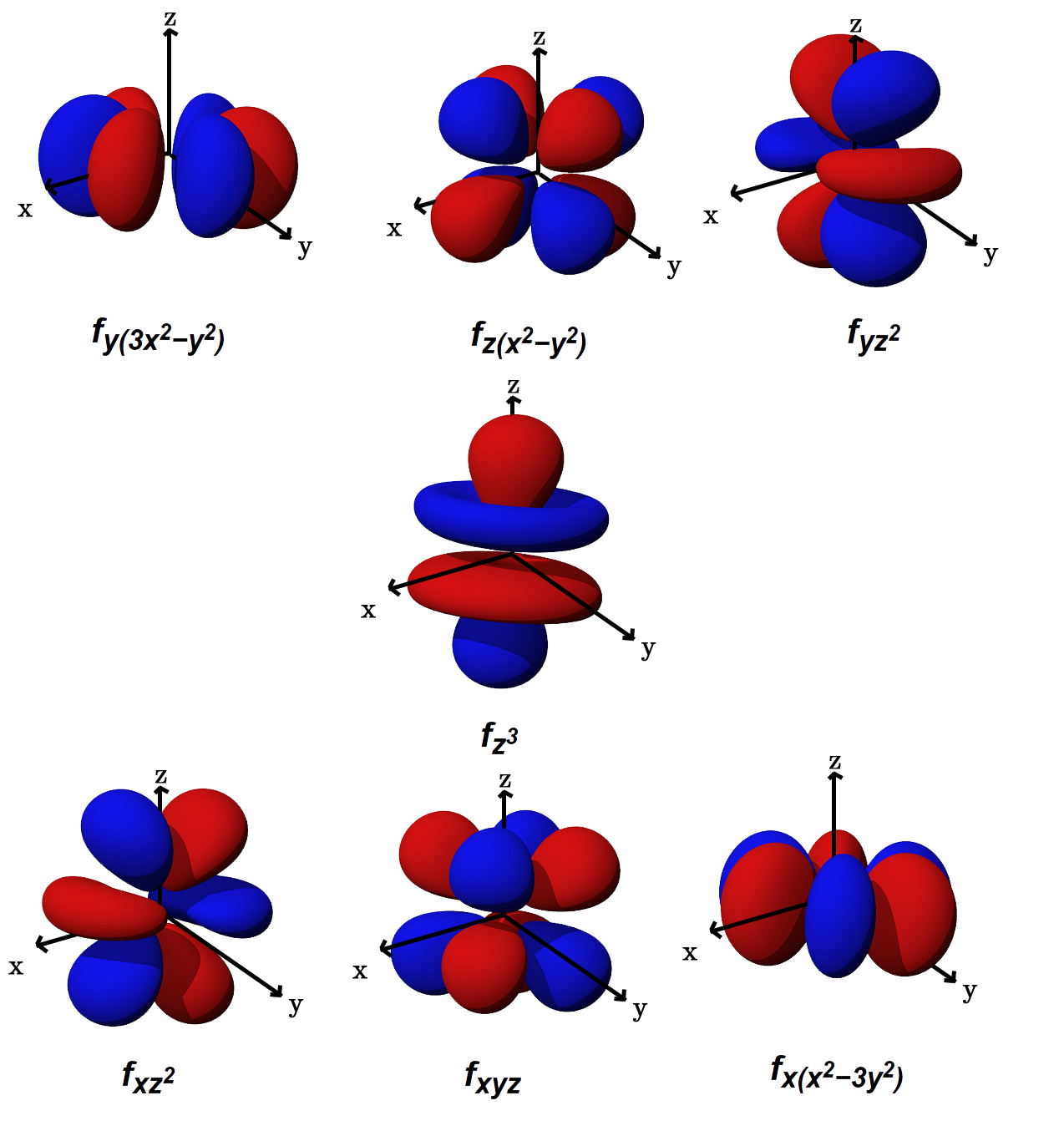What is the shape of f-orbital???
1 Answer
Personally, I've never really known which one was which until now... turns out they're right on wikipedia.
4F ORBITAL SHAPES

Curated from Wikipedia, these are the
n = 4 ORBITAL RADIAL NODES
The radial density distribution of the

Regarding their nodes, we can see that:
-
The
#f# orbitals in the same quantum level have less radial nodes than other orbitals of lower angular momentum#l# (where the function dips down to#y = 0# on the above graph). -
In contrast, these also have more angular nodes than the
#d# ,#p# , and#s# orbitals in the same quantum level (not seen in the above graph), as they have the highest#l# here.
POOR CAPACITY FOR ELECTRON SHIELDING
From the above graph, they are also the least effective at electron shielding, as they are the least penetrating orbitals in their quantum level; the radial electron density tapers off before getting near the nucleus, and so the
For example, this is what gives rise to the lanthanide contraction, where the
This can be observed in the 3rd row transition metals, which have only SLIGHTLY larger atomic radii than the respective 2nd row transition metals:

